Question
The connecting rod of an IC engine is 450 mm long and has a mass of 2 kg. The center of mass of the rod is 300 mm from the small end and its radius of gyration about an axis through this center is 175 mm.The mass of the piston is 2.5 kg and the stroke is 300 mm.The cylinder diameter is 115 mm. Determine the magnitude and the direction of the torque applied on the crankshaft when the crank turns at 0.0066 sec from the inner dead center under an effective gas pressure of 2 N/mm2. The engine speed is 1000 rpm.
Answer
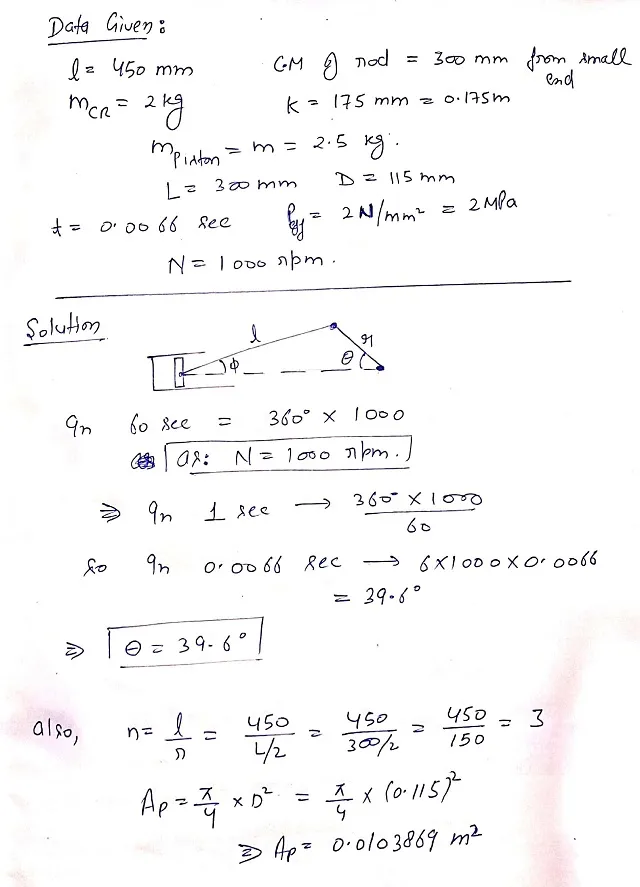
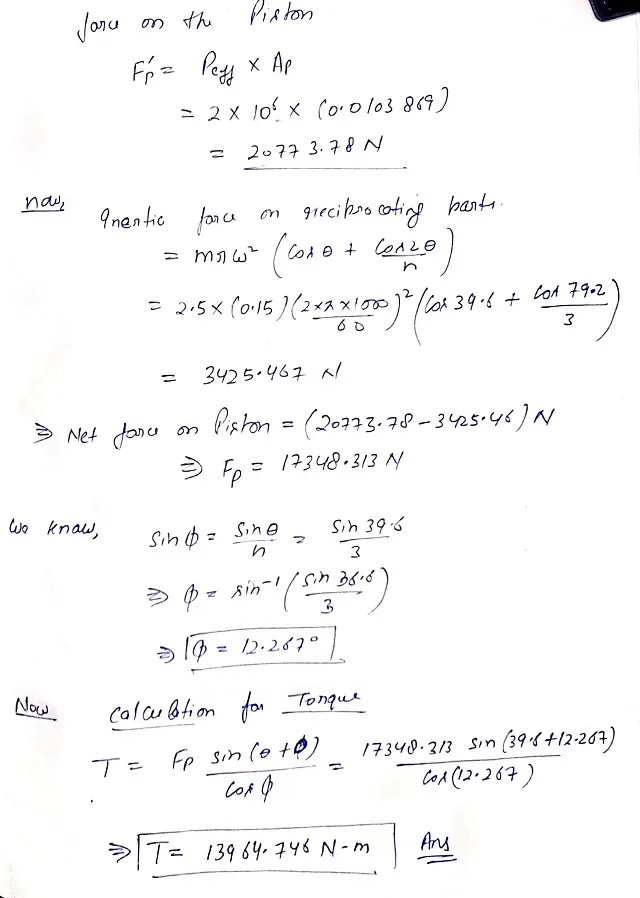
Table of Contents
Torque Calculation in IC Engines: Analyzing Connecting Rod Dynamics
Internal combustion (IC) engines are the backbone of many vehicles, powering cars, trucks, and industrial machinery. One of the key components of these engines is the connecting rod, which plays a crucial role in converting the linear motion of the piston into the rotational motion of the crankshaft. Understanding the torque applied to the crankshaft is essential for optimizing engine performance, durability, and efficiency.
In this article, we will explore the dynamics of the connecting rod in IC engines, the forces at play, and how to calculate the torque on the crankshaft. Specifically, we will walk through an example calculation, highlighting the importance of key parameters such as engine speed, gas pressure, piston mass, and the connecting rod’s physical properties.
Understanding Torque in IC Engines
Torque is the rotational equivalent of linear force. In the context of an IC engine, torque is the twisting force applied to the crankshaft, generated by the force from the combustion of fuel within the cylinder. This force acts on the piston, which then transmits the force through the connecting rod to the crankshaft. Torque is crucial for vehicle acceleration and overall engine performance.
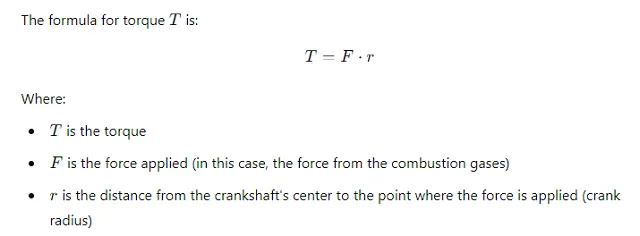
Key Parameters in Torque Calculation
Several factors influence the torque generated in an IC engine:
- Connecting Rod Length and Mass: The length of the connecting rod and its mass distribution affects the engine’s moment of inertia and, subsequently, how force is transmitted to the crankshaft.
- Piston Mass: The piston is responsible for receiving the force from combustion, and its mass influences the linear motion that is converted into rotational torque.
- Gas Pressure: The force exerted by the expanding gases within the cylinder, often given in units of N/mm², is a key driver of the torque produced.
- Engine Speed: The speed of the engine, typically measured in revolutions per minute (RPM), affects the dynamic forces within the system, including how much force is exerted on the crankshaft.
Example: Calculating Torque in an IC Engine
Let’s break down a real-world example. Assume we have the following specifications for an IC engine:
- Connecting rod length: 450 mm
- Connecting rod mass: 2 kg
- Center of mass of the rod: 300 mm from the small end
- Radius of gyration (about the center of mass): 175 mm
- Piston mass: 2.5 kg
- Stroke: 300 mm
- Cylinder diameter: 115 mm
- Effective gas pressure: 2 N/mm²
- Crankshaft rotation: 0.0066 seconds from the inner dead center
- Engine speed: 1000 RPM
Step 1: Calculate the Force Exerted by the Gas Pressure
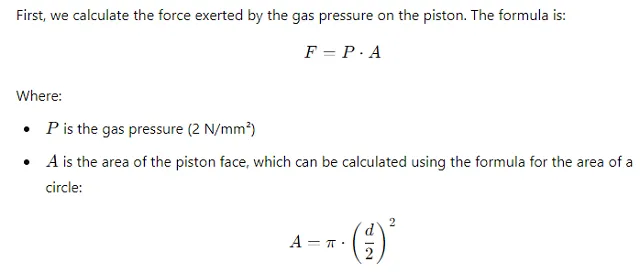
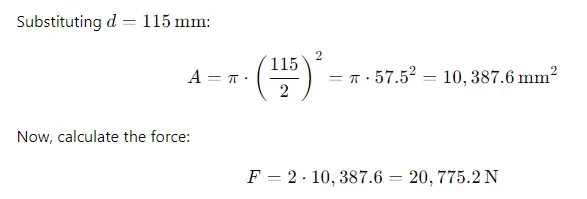
Step 2: Calculate the Torque Applied to the Crankshaft

Step 3: Consider the Dynamics of the Connecting Rod
The connecting rod’s motion and mass distribution introduce additional forces due to its inertia. This can be accounted for using the rod’s mass and radius of gyration. However, for simplicity, we have focused on the primary torque calculation derived from the gas pressure.
Conclusion
Torque calculation in internal combustion engines is critical for understanding the forces that drive engine performance. By analyzing the dynamics of the connecting rod, piston, and other engine components, we can determine the torque applied to the crankshaft and optimize the engine’s efficiency.
In this article, we calculated the torque produced by an IC engine based on real-world parameters, highlighting the significant role played by gas pressure, piston size, and connecting rod properties. These insights are essential for engineers seeking to design more efficient engines and maximize the performance of existing systems. Understanding the nuances of torque generation can lead to better engine designs, improved fuel efficiency, and enhanced vehicle acceleration



